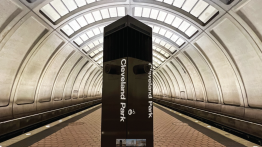COOPERMADE TRANSPORTATION

Richard Sarles CE’67
To describe Richard Sarles’ career in transportation requires a veritable history of the advances in rail service in the northeast over the past forty-five years. Sarles, who graduated from The Cooper Union in 1967 with a degree in civil engineering, has had a direct hand in projects from the introduction of the Acela to the Northeast corridor to creating the transit industry’s first fatigue prevention standards.
That last was a part of his five-year tenure as General Manager and Chief Executive Officer of the Washington Metropolitan Area Transit Authority (WMATA). When he took that post, which he held from 2010 until his retirement in 2015, he was inheriting a system that was facing serious budgetary and safety concerns after a 2009 fatal crash on one of the city’s subway lines. Besides drafting the all-important fatigue prevention standards, he created WMATA’s first system safety plan.
In 2007, Sarles, who had spent many years as a transportation engineer working in construction, planning and project management, became executive director of New Jersey Transit (NJT). As he told a senate panel in 2009, the company had inherited a mix of rail lines, bus routes, and infrastructure in various states of disrepair from different private entities, primarily the Erie Lackawanna system. Over the years, the company had to create a coherent system out of these disparate elements, so much of Sarles’ work was dedicated to keeping the system in a state of good repair and expanding the company’s services. That included procuring locomotives that let commuter trains from non-electrified New Jersey rail lines go directly into Manhattan, opening a light rail service in southern New Jersey, and overseeing extensions of several other light rail systems. Sarles, who has received a Cooper Union Presidential Citation in 2011 and the CUAA Gano Dunn Award in 2018, was also a tireless advocate for a much-needed new tunnel under the Hudson, a project which has recently received federal funding.
Before his New Jersey Transit tenure, Sarles was Vice President at Amtrak where he introduced the highspeed Acela line for the region and electrified the railroad for the first time between New Haven and Boston.
When he retired from the WMATA, his colleagues tried to persuade him to stay: after all, he’d quickly improved the Washington system after the calamitous 2009 accident and was overseeing the extension of that city’s Silver Line. But Sarles, almost 70 at the time, chose to focus on his family. U.S. Representative Gerald E. Connolly summed up his low-key style: “He was a buttoned-down workhorse who restored confidence in the system after a very rocky run.”




